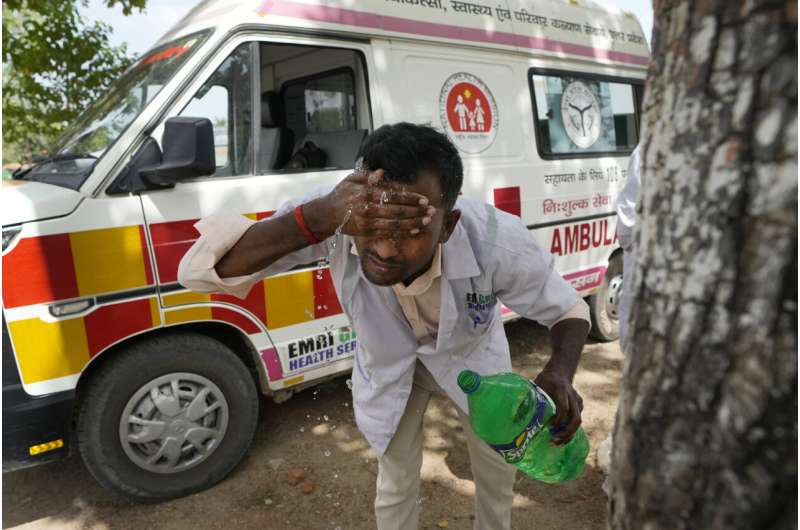
Extreme heat is fast becoming a public health crisis in India, with more than 150 people dying during the latest brutal heat wave in June. Prolonged heat waves, sometimes classified as a slow-onset disaster, are one of the deadliest consequences of global warming that India faces. The government estimates nearly 11,000 people have died during heat waves this century, yet experts say such figures are likely a vast undercount.
Banpur, a village of about 13,000, lies in the mostly poor Bundelkhand region deep in India’s interior. It’s arid and stony, with little tree cover to protect people in one of the nation’s hottest regions. Naik and Kumar make up one of two ambulance crews that cover the village and surrounding area, carrying patients to the government-run public health center. The state and federal governments help fund the not-for-profit ambulance service, making it a free lifeline for patients.
“I consider every patient my family member. I don’t care if it is hot or if I am hungry, I go on a mission to get the patient out and transport them to the hospital,” said Naik, whose only protection from the heat and dry, hot winds is a white cotton towel wrapped around his head. “It is difficult for me driving the vehicle in extreme heat, but it is nothing compared to the hardships of a patient in a medical emergency.”
Climate experts say that heat waves are here to stay, and India needs to prepare better to deal with their consequences. A study by World Weather Attribution, an academic group that examines the source of extreme heat, found that a searing heat wave in April that struck parts of South Asia was made at least 30 times more likely by climate change.
He and Naik skip lunches most days. When they find time, they eat under whatever shade they can find. They earn a little more than $150 a month, hardly enough to support their families given rising costs. Naik has three young children and Kumar sends most of his income to his wife and parents, who live 350 kilometers away.